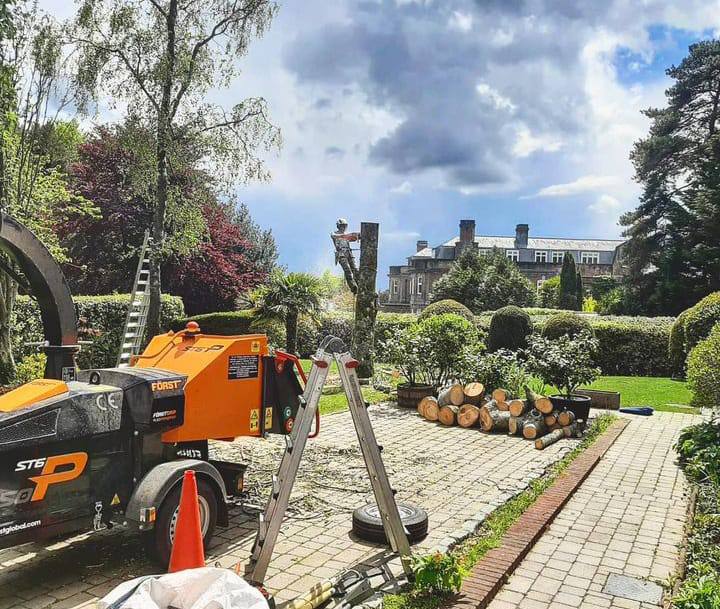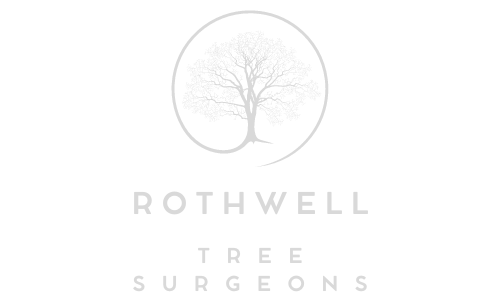What Happens If You Leave a Stump in Your Garden?
After removing a tree, the question of whether to leave or remove the stump often arises. While it may seem harmless to leave it in place, an unattended tree stump can lead to various issues over time. At Rothwell Tree Surgeons, we believe in providing valuable information to help property owners in Rothwell, Northamptonshire, make informed decisions. This article explores the potential consequences of leaving a stump in your garden and why removal might be the best choice for maintaining a healthy and safe outdoor space.
1. Regrowth and Suckering
One common misconception is that once a tree is cut down, it’s gone for good. However, many tree species have resilient root systems capable of producing new growth from the stump. Known as “suckering,” this regrowth often appears as shoots around the base of the stump. Not only can suckering look untidy, but it also creates extra work for property owners, as the suckers may require regular pruning. Additionally, without proper treatment, these shoots can develop into a thicket, further complicating removal in the future.
2. Attraction of Pests
An old stump left in the garden can quickly become a breeding ground for insects and other pests. Wood-boring insects, including termites, beetles, and ants, are attracted to decaying wood and can establish colonies within the stump. Once pests establish a presence, they may spread to other areas of your garden or even into nearby structures, causing damage. For those with children or pets, these pests can also be an unwanted nuisance, particularly as the stump starts to deteriorate.
3. Spread of Fungal Infections
A rotting stump is also a prime candidate for fungal growth. Fungi thrive in decaying wood, and you may start to see mushrooms or other fungal species growing around the base. While some fungi are harmless, others can spread to surrounding plants, impacting the health of nearby trees, shrubs, and even lawns. Fungus spread can create an unsightly garden environment and, more importantly, pose risks to other valuable plants and trees in your garden.
4. Root Decay and Soil Health
Leaving a stump in place means the roots are also left to decay over time. As the roots decompose, they create air pockets in the soil, potentially leading to uneven ground. This can make the area unsafe, especially if used frequently. The decaying roots can also disrupt the structure of the surrounding soil, affecting the health and stability of any plants or trees nearby. In some cases, root decay can even impact the quality of the soil, making it less suitable for future planting.
5. Loss of Usable Garden Space
A tree stump takes up valuable garden space. Whether your garden is small or expansive, that unused space could be put to better use. Leaving a stump limits your options, preventing you from landscaping the area or creating new features such as flowerbeds, pathways, or seating areas. Removing the stump opens up the garden, allowing you to maximise the potential of your outdoor space.
6. Potential Safety Hazards
A tree stump left in the garden can present a serious tripping hazard, particularly for children and the elderly. The risk of someone accidentally tripping over the stump is especially high if it’s in a frequently used area. Moreover, if the stump is hidden beneath grass or foliage, it can become even more dangerous. By removing the stump, you improve the safety of your garden and create a safer environment for everyone who uses it.
7. Impacts on Curb Appeal
If you’re considering selling your property in the future, an old tree stump can detract from your garden’s overall appearance. Potential buyers are likely to view a visible stump as an eyesore, perceiving it as additional work they would need to handle after purchasing. Even if selling is not in your immediate plans, a well-kept, stump-free garden improves the aesthetics of your property and enhances curb appeal.
Stump Removal Options
If you’ve decided that stump removal is the right choice, there are several methods to consider:
- Grinding: Stump grinding is a popular and efficient solution. A stump grinder grinds the stump down to ground level or below, allowing you to cover the area with soil and replant if desired.
- Excavation: For larger stumps with extensive root systems, excavation is an effective approach. Although this method requires more time and equipment, it ensures complete removal of both the stump and the roots.
- Chemical Treatment: In some cases, chemical treatments can speed up the decay process. However, this is usually a slower option and may not be suitable for all types of trees or for immediate stump removal.
Conclusion
Leaving a tree stump in your garden may initially seem convenient, but it can lead to multiple issues, from pest infestations to safety hazards. Removing the stump not only enhances the aesthetics of your garden but also safeguards its health and usability. At Rothwell Tree Surgeons, we offer professional stump removal services tailored to the unique needs of each property. If you’re ready to reclaim your garden space and ensure a safe, visually pleasing environment, contact us today to discuss how we can help with expert stump removal solutions.
Call us on: 01536 903 994
Click here to find out more about Rothwell Tree Surgeons
Click here to complete our contact form and see how we can help with your tree needs.

